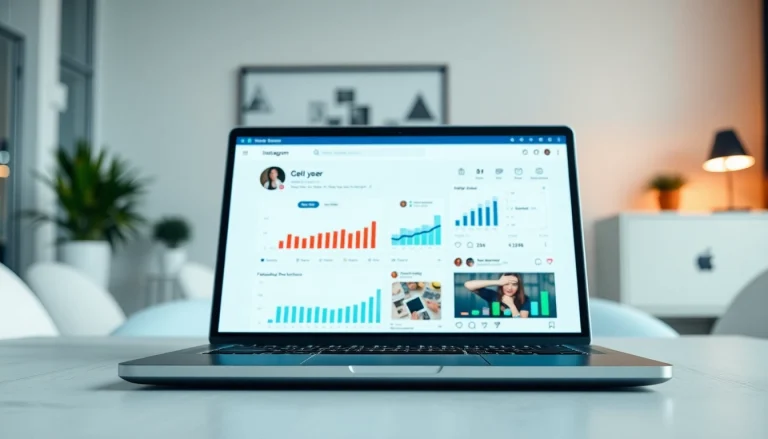Understanding Competitive Intelligence
Definition and Importance
Competitive intelligence refers to the systematic gathering and analysis of information about competitors, the market, and the industry landscape. Unlike industrial espionage, which is illegal and unethical, competitive intelligence is conducted within legal bounds and aims to enhance strategic decision-making. Companies utilize competitive intelligence services to gain valuable insights that can inform product development, marketing strategies, pricing decisions, and long-term business planning. This process provides a competitive edge, enabling organizations to proactively navigate market changes instead of reacting passively.
Types of Competitive Intelligence
Competitive intelligence can be classified into several categories, each catering to different aspects of the business landscape:
- Product Intelligence: Analysis of competitors’ products, including features, performance, and pricing.
- Market Intelligence: Understanding the market dynamics, customer preferences, and overall trends in the industry.
- Customer Intelligence: Gathering insights about competitors’ customers, including purchasing habits and satisfaction levels.
- Operational Intelligence: Examining competitors’ operational efficiencies, supply chains, and business models.
- Strategic Intelligence: Insight into competitors’ long-term strategies, including potential market entries or partnerships.
How Competitive Intelligence Impacts Business Strategy
The role of competitive intelligence in shaping business strategy cannot be overstated. By analyzing competitor behavior, market trends, and consumer needs, businesses can make informed strategic choices. This intelligence aids in identifying gaps in the market and recognizing emerging opportunities. For example, if a company discovers that a competitor is gaining market share through a particular marketing tactic, it can quickly adapt or innovate to counteract that advantage. Ultimately, this proactive approach facilitates better resource allocation, strategic positioning, and sustained competitive advantage.
Key Components of Competitive Intelligence Services
Data Collection Techniques
Effective competitive intelligence relies on robust data collection techniques. The most common methods include:
- Primary Research: This involves direct engagement with customers, suppliers, and industry experts through interviews, surveys, and focus groups.
- Secondary Research: This technique utilizes existing resources, such as industry reports, academic journals, news articles, and competitor websites to gather relevant information.
- Social Media Monitoring: Analyzing social media activity can provide insights into public sentiment regarding competitors and trends within the industry.
- Web Scraping: Leveraging technology to extract data from competitor websites can offer timely insights on pricing, features, and customer reviews.
Analysis Methodologies
Once data is collected, the next step is analysis. There are various methodologies employed to interpret this data effectively:
- SWOT Analysis: This tool evaluates Strengths, Weaknesses, Opportunities, and Threats related to competitors.
- Porter’s Five Forces: This framework helps analyze the competitiveness of the market and understand the forces shaping industry dynamics.
- Competitor Profiling: Creating detailed profiles for key competitors allows organizations to track their strategies and operations systematically.
- Data Visualization: Utilizing graphs, charts, and infographics can simplify complex data and make insights easier to digest and act upon.
Distribution and Actionable Insights
The final phase of competitive intelligence services is the distribution of insights to stakeholders. This involves crafting comprehensive reports and presentations that summarize findings and provide actionable recommendations. It’s crucial that these insights are tailored to specific audiences within the organization, such as executives, marketing teams, or product development units. For instance, a report aimed at marketing leaders may focus on competitive positioning and pricing strategies, while a report for product teams might delve into product features and customer preferences.
Implementing Competitive Intelligence Services
Creating a Competitive Intelligence Plan
An effective competitive intelligence plan begins with defining clear objectives. Organizations must identify what insights they seek and how these will support their goals. The plan should outline the methodologies for data collection and analysis, the stakeholders involved, and the frequency of reporting. A well-defined competitive intelligence plan serves not only as a roadmap but also as a framework for accountability.
Integrating CI into Corporate Strategy
For competitive intelligence to be effective, it must be integrated into the organization’s core strategic framework. This requires collaboration across departments to ensure that insights are utilized in decision-making processes. Regular briefings should be scheduled to provide updates on the competitive landscape, along with training sessions to equip team members with the skills to use intelligence effectively.
Securing Buy-in from Stakeholders
Securing buy-in from relevant stakeholders is essential for the successful implementation of competitive intelligence services. This involves demonstrating the value of these insights through case studies or pilot programs that highlight how competitive intelligence has benefited other organizations. Engaging stakeholders in the process of building competitive intelligence capabilities fosters a culture of collaboration and strategic agility.
Challenges in Competitive Intelligence
Legal and Ethical Considerations
Conducting competitive intelligence comes with its share of legal and ethical challenges. Organizations must be diligent in ensuring their practices comply with local laws and regulations. This means avoiding any form of espionage or using deceptive tactics to gather information. Ethical considerations also include transparency with customers and integrity in the treatment of competitors.
Common Pitfalls and How to Avoid Them
Several common pitfalls can undermine competitive intelligence initiatives. These include:
- Over-Reliance on One Source: Depending solely on one type of data source can lead to a skewed understanding of the competitive landscape. It’s important to diversify data collection methods.
- Ignoring Data from Inside the Organization: Employees often have valuable insights and frontline experiences that can inform competitive intelligence. Engaging them in the process is crucial.
- Failure to Act on Insights: Collecting intelligence without implementing changes can lead to frustration and wasted resources. Organizations should ensure that actionable steps are taken based on findings.
Technological Barriers in CI
As the landscape of competitive intelligence evolves, organizations often face technological barriers. Implementing advanced analytics or AI tools can require significant investments in both time and resources. Moreover, a lack of skilled personnel to operate complex tools can hinder an organization’s ability to derive meaningful insights. To counteract this, companies can consider investing in training their staff or partnering with specialized CI firms, such as competitive intelligence services that can provide tailored solutions.
Future Trends in Competitive Intelligence Services
The Role of AI and Automation
Artificial Intelligence (AI) and automation are set to revolutionize competitive intelligence. These technologies can enhance data collection efficiency and accuracy. By automating data scraping and initial analysis, organizations can free up human resources for more strategic tasks such as interpretation and action planning. Machine learning algorithms can also predict market trends based on historical data, providing companies with foresight that can inform strategic plans.
Emerging Tools and Technologies
As the market for competitive intelligence continues to grow, new tools and technologies are emerging. For instance, platforms that incorporate big data analytics allow organizations to sift through masses of information to uncover actionable insights. Additionally, tools that integrate social listening features are gaining traction, enabling businesses to monitor customer sentiment and competitor activities in real time.
Predictions for Competitive Analysis Evolution
The future of competitive analysis will likely see a shift towards more integrated and real-time solutions. Businesses will increasingly rely on dynamic dashboards that provide ongoing insights and can adjust in real time to market changes. Furthermore, as global competition intensifies, firms that invest in comprehensive and flexible competitive intelligence frameworks will be better positioned to adapt and thrive in diverse environments.







